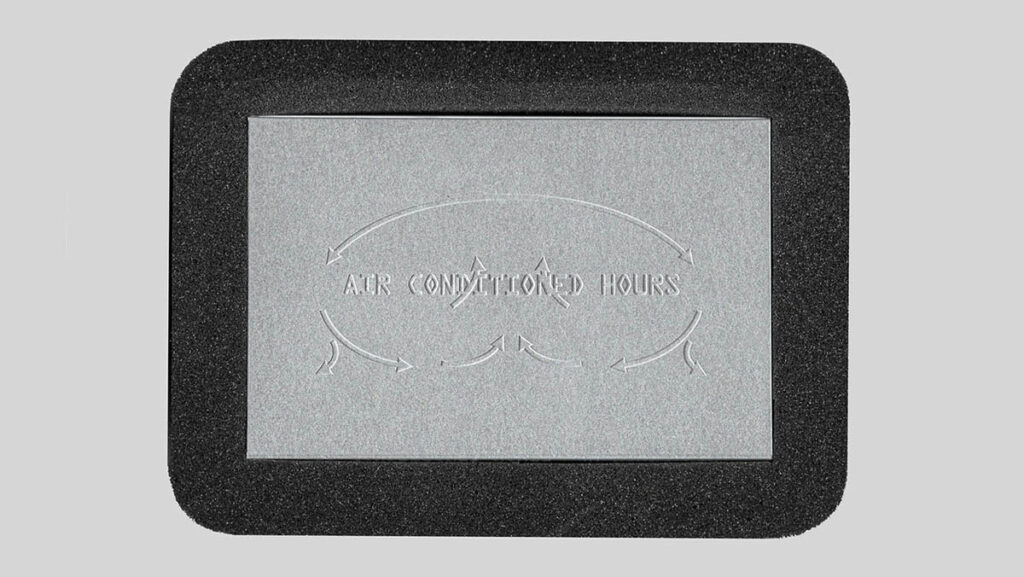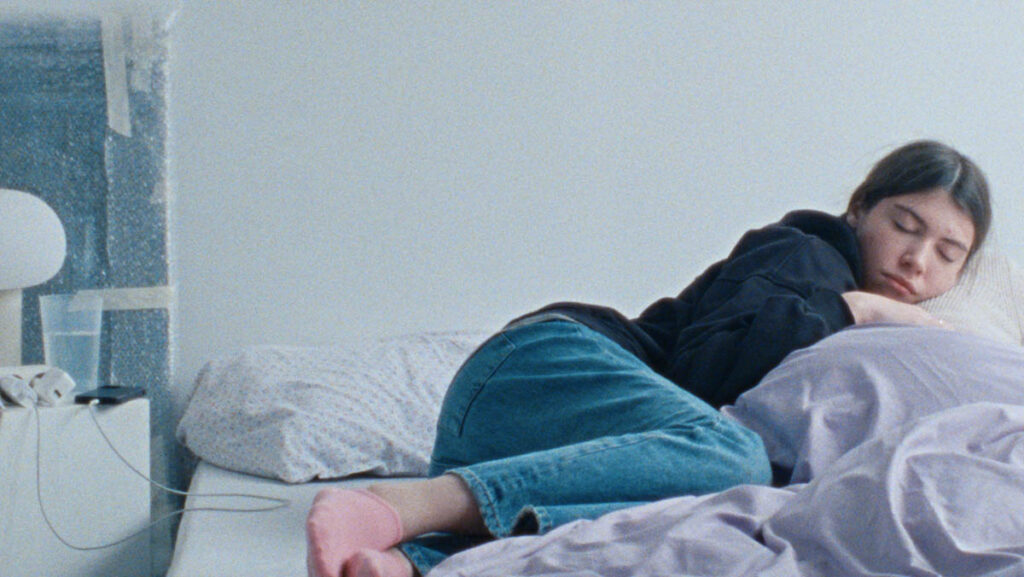
Media theory and spatial theory in architecture are often the main centers of your work. Can you tell us how you transform this text-based idea into a film, painting, or sculpture?
It is a bit complex, but of course, I am always interested in how we perceive space in theory, as well as its philological aspects. In my process, I am making many drawings about intertwining lines, perspective, and perception. I used to draw my studio very precisely and draw my sculptures, which I then painted. When I was a student, I was very much interested in Alberto Giacometti’s early drawing, which is mostly about how to transfer three-dimensional space onto a two-dimensional surface.
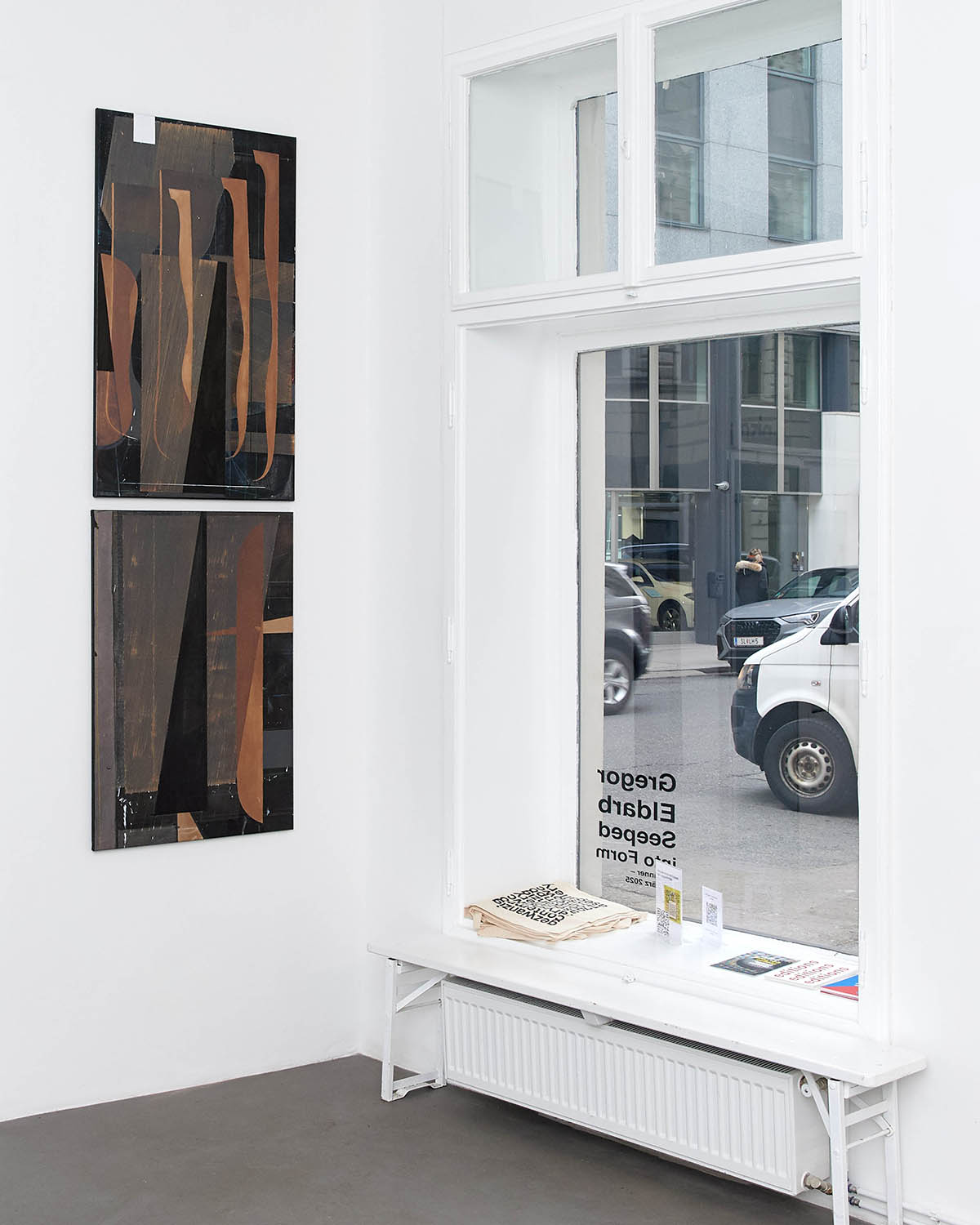
I have been making films for the last six or seven years. They are all driven by some form of phenomena in space or media, but also in physics, which is always followed by the theory text. My work from the year 2020, “Dünner als zwei Zehntausendstel eines Millimeters,” is a video where soap suds, various framing devices, and reflections of a computer screen are elements filmed with a similar method to the one now in my last video work that can be seen in Gallery Gezwanzig. In both cases you have this doubling of a movement; the material is changing, and also the projection is changing. I think of it as a collage of different times. If you go around, there are also many screens in the city, and they are also mirroring each other. I am interested in these small sensations. For the work “Dünner als zwei Zehntausendstel eines Millimeters.” I was fascinated with Frei Otto’s work and his architectural models made out of soap bubbles.
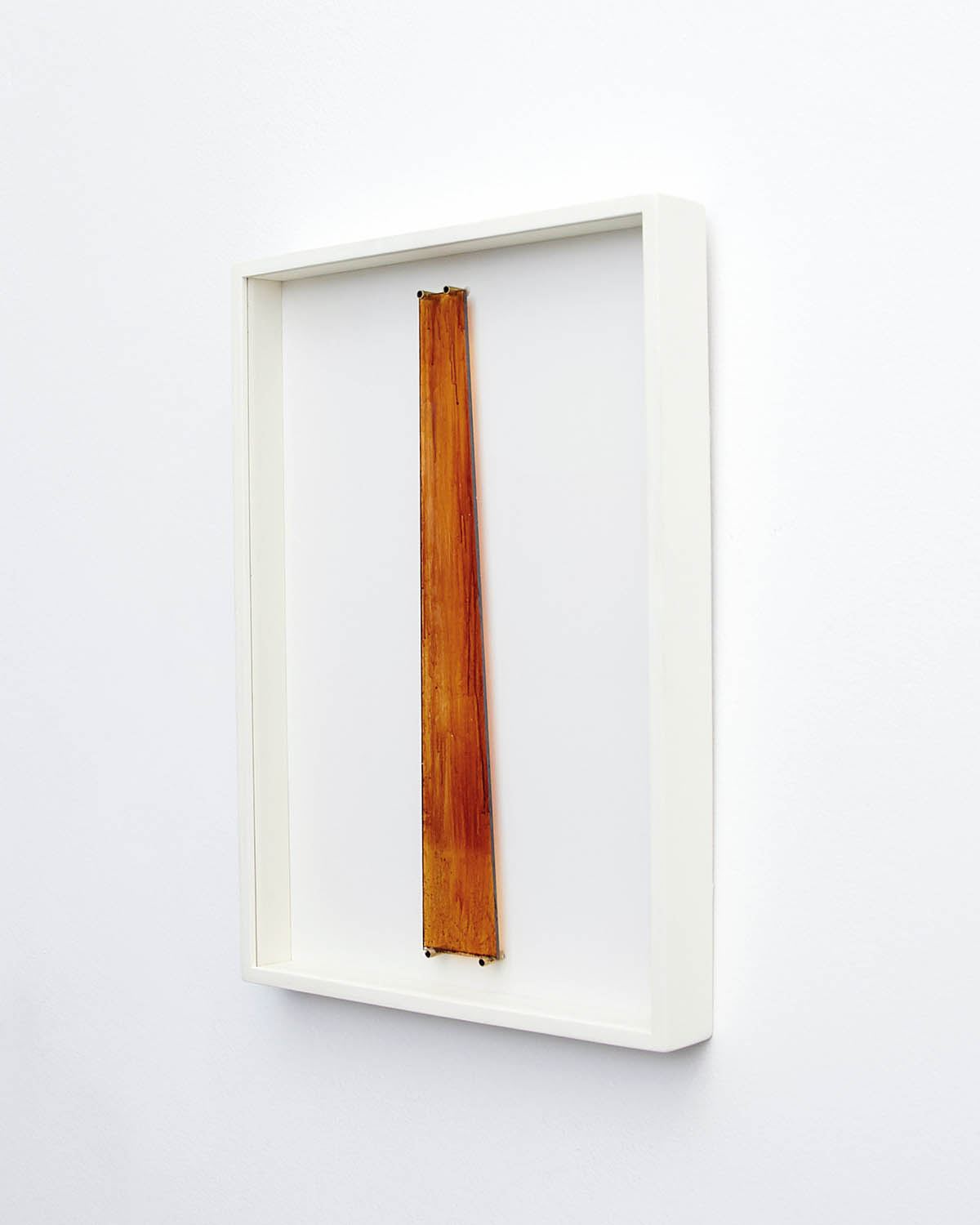
Tell us about the framed pieces of glass, works “Guitar/ Apparatus, Detail 1” 2024 and “Guitar/ Apparatus, Detail 2.” What happens when oil, glass, and magnets come together? to create an image?
These two works were primarily part of the glass structure used for the shooting of the video; I built a kind of cinematic apparatus of several layers to achieve the – exclusively analog – effects you see in the film. A computer screen hangs above a basin with a liquid, on which the animation I prepared is running. The screen is reflected in the glass frame object with a ferrofluid oil (liquid iron) in it. The crystalline formations are created by the movement of a magnet underneath. So the works Guitar/ Apparatus, Detail 1 and 2 are the products of my actions on the glass, almost as if painted with magnets with oil.
The “Seed is Planted” The booklet is exhibited in a way that the pages are spread on the wall next to each other; the booklet represents your research and contains the text by Esther Leslie. Liquid Crystals: The Science and Art of a Fluid Form. The same text we hear in the “A Seed is Planted” ten-minute video work, who is the person reading it?
The voice reading the text is Kenneth Patchen. He was an American poet and novelist who is no longer with us. I used AI technology to make his voice read the text.
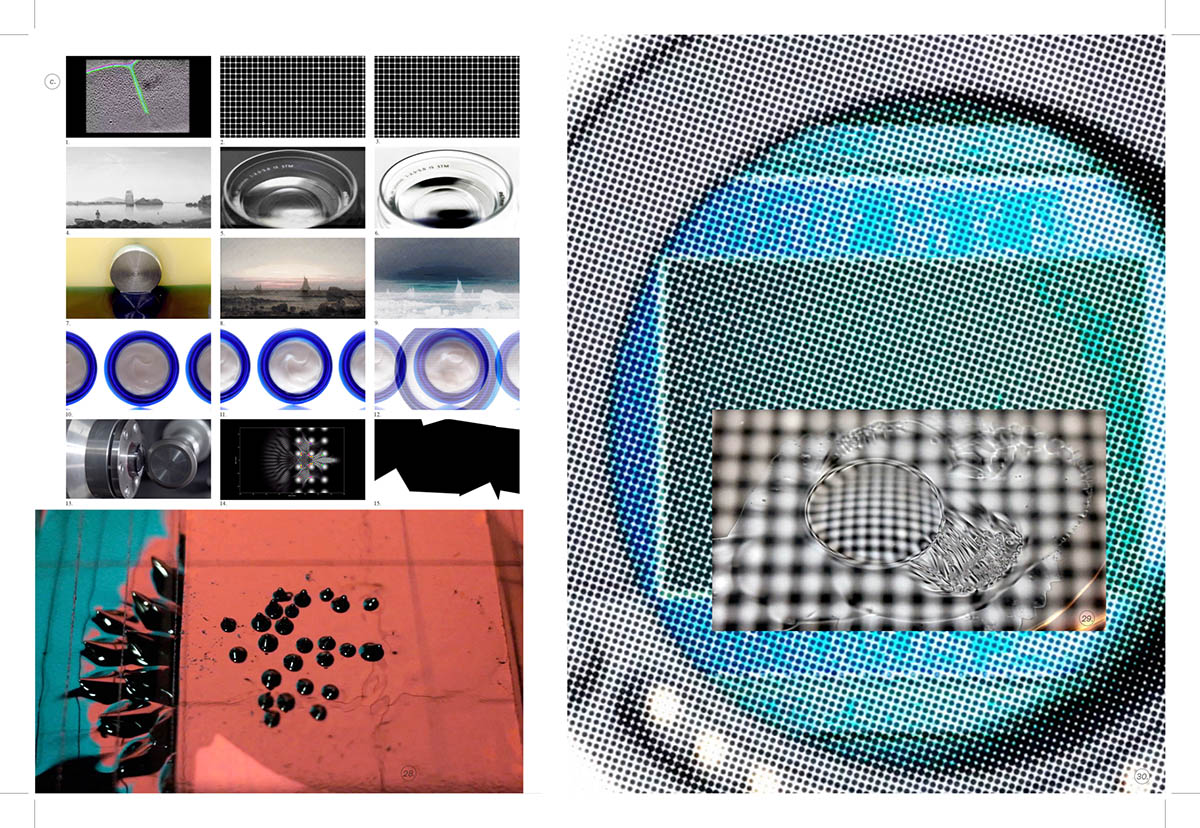
When it comes to AI technology and post-production, is there any post-editing process you are using to make your video work?
No, they are not at all edited; they are just as they are filmed, just slower, like five times slower. I often use advertisements and play them on the screen of the TV that is mirroring in the glass structure, so it could look like there is some post-edit in color and movement, but it is indeed an advertisement for a cosmetic line with very minimal graphic one, or a part of a commercial for camera lenses, or a Shell commercial for oil. I am very interested in optics, so it comes in animations I am making where colors change and melt into each other. For this work, I also used painting done in the luminism style, and then I made a negative of it and edited it in raster, and then used it as one of the backgrounds that play on the TV.
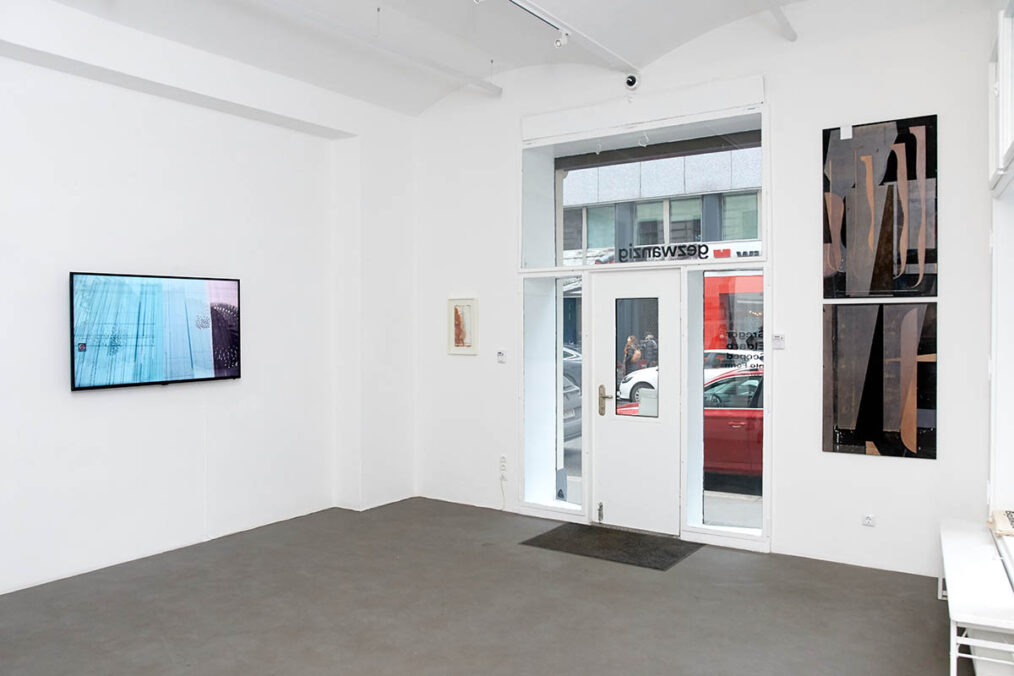
I see a touch of late 1960s and 1970s aesthetics. At this moment, the first television was in color, and screens were also coming to people’s homes for the first time.
The text from Leslie is about liquid crystals and TV screens and any other electronic devices and screens that are made of them. So we are living in a time where we are nonstop in touch with such a screen and such a material. It is the way we look at things; it is through these liquid crystals and the whole aesthetic around it. I also love the fact that the video work itself is playing on such a screen, so you have this doubling of the idea of the liquid crystal inside of the liquid crystal. The video work discusses the material on which the work is shown. So it is a sculpture in the end in some way.
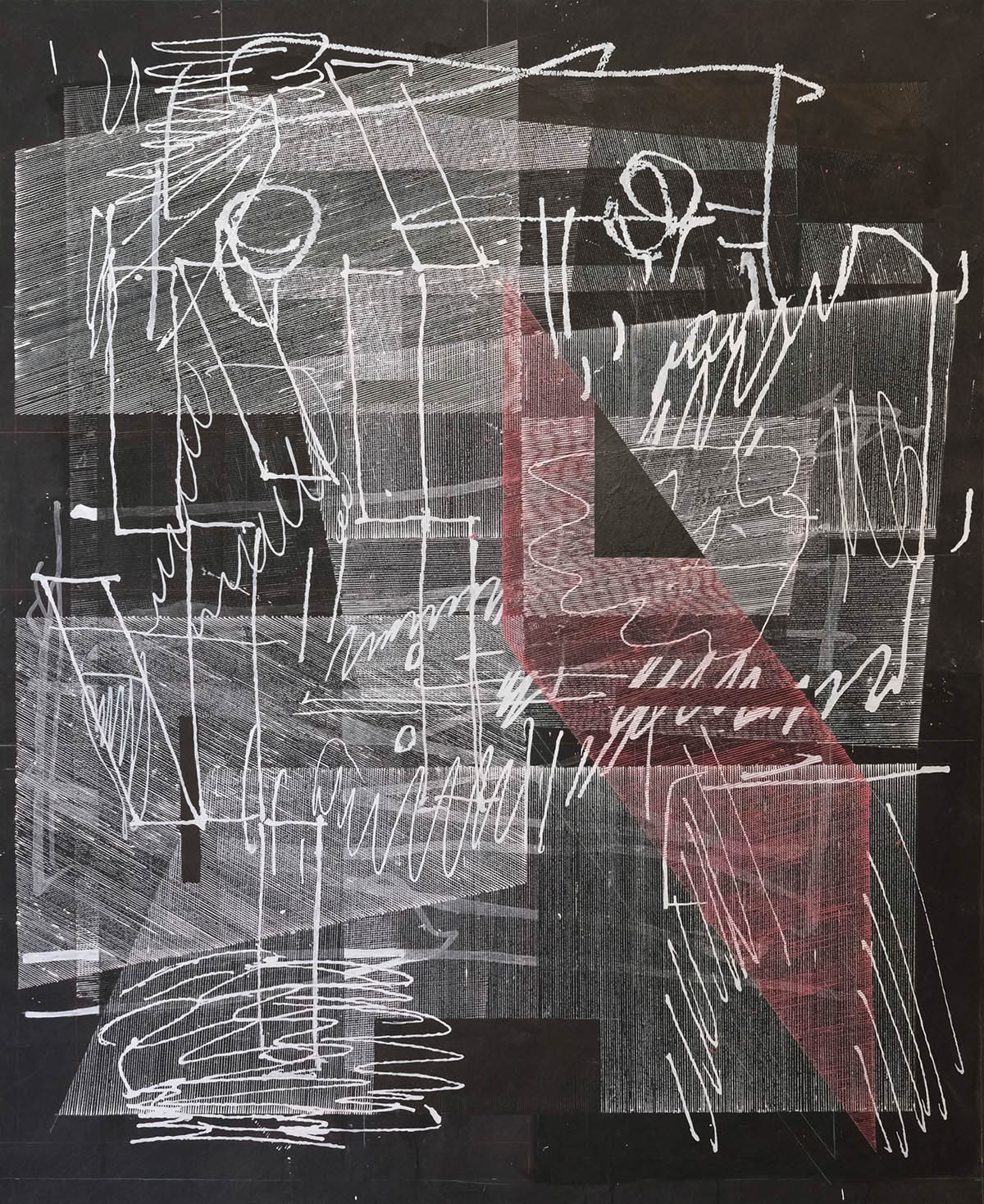
Do you have some ritual or tradition in preparing yourself for the work in the studio?
There is no “normal day” in the studio for me. I am always thinking of what I will do when I go there, and this is my preparation. When starting a project, I usually draw a lot of large-scale drawings, such as the one that is part of the show “Page 127/29/Acinema” 2024. This takes a lot of time, so I use drawing practice to come into the conceptual part of the work and move on with the project, and they are in the end always somehow inside of the work. If I am making a movie, then I am, of course, building objects for the movie and models, and it is a lot of intuitive trying to do it. But in the end, the final work is very controlled.
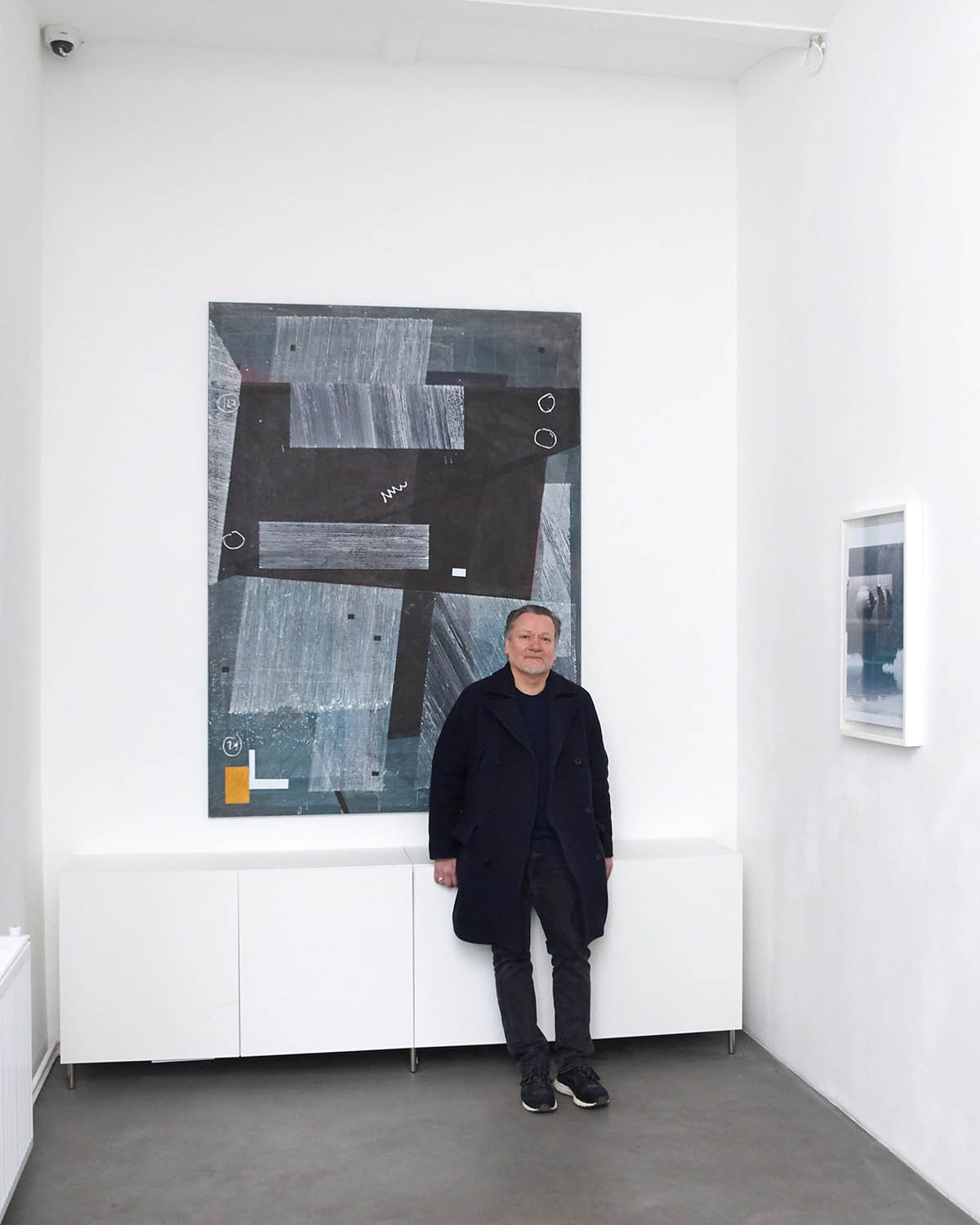
CURRENTLY ON VIEW:
Exhibition: Gregor Eldarb – Seeped into Form
Exhibition duration: 16. January – 14. March 2025
More information about the exhibition can be found here.
Address and contact:
Gallery Gezwanzig
Gumpendorfer Str. 20, 1060 Vienna
www.gezwanzig.com
www.instagram.com/gezwanzig/
Gregor Eldarb – www.gregoreldarb.com, www.instagram.com/gregoreldarb/
Gregor Eldarb, born in 1971 in Poland, currently lives and works in Vienna. From 1992 to 1997 he studied painting and graphics at the Academy of Fine Arts Vienna; since 2005 he is participating in solo and group exhibitions in Austria and abroad; Eldarb received various awards and scholarships, including WIELS Contemporary Art Centre, BKA Studio, and Brussels/I.S.C.P. The International Studio & Curatorial Program New York, USA, BKA Studio / State Scholarship for Fine Arts, BKA / outstanding artist award, recognition prize for fine arts. He done many teaching activities, including a guest professorship at the University of Ostrava / Faculty of Art, CZ.




